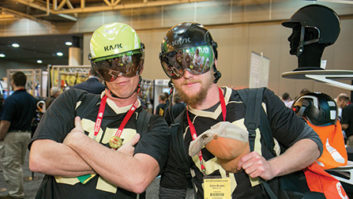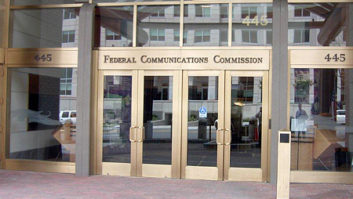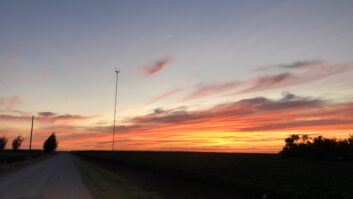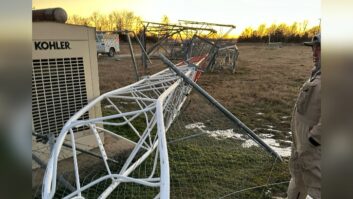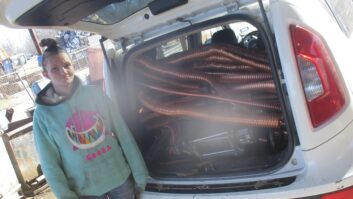In late October, the Telecommunications Industry Association announced the publication of the new ANSI/TIA-222-H Standard, titled “Structural Standard for Antenna Supporting Structures and Antennas and Small Wind Turbine Structures.”
This is a revision of the TIA-222 Standard, and it builds on the changes introduced in Revision G (2006), expanding and enhancing them.
The revised standard is a thick tome that will cost you $750 if you want a copy. Thankfully, it’s not necessary for tower owners to understand every provision of the standard. That’s more the territory of the structural engineers whom we hire to design and analyze our antenna support structures.
Still, it’s a good idea for those affected by the standard to know what’s in it.
Among other things, Revision H:
● Incorporates ASCE 7-16 Standard revised wind maps with ultimate wind speeds based on risk category and the wind and ice maps. The new wind maps are based on double the amount for wind reporting stations and for longer period of records and reflect better hurricane model simulations.
● Updates load factors to account for the ultimate wind speeds and adds a ground elevation factor.
● Enhances the definitions of the different risk categories to clarify associated structures and conditions for the different categories. Adds a new risk category.
● Enhances Section 2 (Loads) provisions including exposure categories based on surface roughness and more defined risk categories; expands topographic effects approach using three methods — simplified, rigorous and site-specific.
● Updates and enhances the seismic section 2.7 to be in conformity with ASCE 7-16 and ACI 318-14 standards to include the updated ground acceleration maps and simplified irregularities. Eliminates the exception for seismic loading analysis in low seismic regions and vertical seismic force analysis is now required.
● Updates Section 4 (Design Strength) requirements for changes in the Steel Standard, AISC 360-16, revises the torsional/flexural buckling strength for double angles, bolt shear strengths, refined bracing effective length criteria, revised anchor rod interaction equations, and adds a new section to address U-bolt design strength.
● Updates Section 9 (Foundation and Anchorages) for changes to ACI 318-14. Clarified resistance factors and enhances several provisions.
● Updates Section 10 (Protective Grounding) provisions with focus on impedance vs. ground resistance. Provides a new default TIA grounding.
● Updates Section 12 (Climbing Facilities) to be in sync with other safety standards, including ASSE A10.48.
● Updates Section 15 (Existing Structures) by defining comprehensive structural analysis and feasibility study. Allows demand-capacity ratio up to 105 percent. Requires modifications to existing structures to be inspected after modification.
● Addition of new Section 16 (Mounting Systems).
There are a number of other changes, revisions and updates; but the above represents the main items that would affect broadcasters.
A structural engineer’s seal often certifies that a tower was designed in accordance with the standard referenced in the drawings.

STRUCTURAL QUESTIONS
The updates to Section 15 (Existing Structures) is the change that jumps out at me. On a regular basis at my company we do structural analyses on tower structures, usually for the purpose of making sure the tower can safely support a proposed load, either for a tenant or for our own use. I can’t help but wonder what the post-modification inspection requirement will entail — who must perform that inspection and what information must it contain? That would seem to have the potential for significant added cost and project delays.
Of course, in many jurisdictions, this standard does not have the force of law; you can pretty much build what you want. But in others, it does. At the very least, insurance companies rely on the ANSI/TIA-222 standard, which is one of the reasons we spend the money to have structural analyses run.
If we were to add a significant load to a tower without first ensuring that the tower could safely support that load (based on the ANSI/TIA-222 standard), and the tower later came down in a wind and/or ice event, we might have trouble getting the insurance company to pay the claim. I don’t even want to think about what might happen if someone were hurt in such an event.
In some jurisdictions, the ANSI/TIA-222 standard does, in effect, have the force of law. When we were building the new KBRT four-tower site in Southern California a few years ago, the plan checker required me to purchase a copy of Revision G for him so that he could evaluate the tower engineering against the standard. My guess is that he got totally lost in the process and eventually relied on the engineer’s seal on the tower drawings. He did ship me the copy of Revision G at the end of the project. I was grateful for that at least.
When a structural engineer puts his seal on a set of tower plans, he is generally certifying that those plans are in compliance with the ANSI/TIA-222 standard in effect at the time. There will always be a notation of the standard used. In the photo, note that the standard used on that particular project was “TIA-222-G.”
So, if a local building official is relying on the engineer’s seal as a certification of compliance with the stated standard, that standard in effect has the force of law. That’s something to think about if you’re planning to build a new tower anytime soon, and that’s a good reason to get familiar with the new standard.
THE SKILLS GAP
During the SBE’s national convention I spent time talking with some of the top engineers and engineering managers in our industry about something we’re calling the “skills gap.” The long and short of this is that we have an older generation of engineers who are proficient in RF and audio but not IT, and a younger generation coming up that is proficient in networking and other aspects of IT but not in RF and audio. We have a gap.
The question du jour was what to do about this. How do we equip the up-and-coming generation to be fully-skilled broadcast engineers? We kicked a number of ideas around, but the one that kept coming up was that we need to find well-qualified, IT-proficient people who are willing to be trained in RF and audio, and then train them. Simple, right? Maybe not so much.
At my company we have had considerable success with this model, but I fully realize that our success is more due to the exceptional young individuals we have brought aboard than the model itself or any training we have provided. Which means that the most important thing is to find the right people. That’s the not-so-simple part. Why is it so hard? I can think of a few reasons.
One is that qualified IT techs and engineers can pretty much write their own ticket. They can pretty easily land a job in a corporate environment or even a medium or small business where they can command a higher salary and better benefits than a broadcast station can offer, and their work will be more general and less specialized in nature.
Another is that broadcast jobs often have irregular hours and require technical personnel to be on-call 24/7. You get some of that in non-broadcast IT jobs, but it tends to be more structured. Also, in broadcast work, technical people tend to be one-man shows, often with no backup.
Most of the broadcast engineers I know are in the business because they love the business. They got into it in the first place because they were attracted to the show-biz aspect or the mystique; and by the time that wore off, they were hooked. I’m not sure the show-biz aspect or mystique of broadcasting even exist anymore.
Write for RWEE!
Six times a year, a select readership made up of technology executives and engineers enjoys RW Engineering Extra and its DIY technical tips, hard-core engineering content, white papers and career guidance. You can be part of the team that creates this specialized content! Tech Editor Cris Alexander welcomes your ideas for articles. Email him with a description of your proposed story at [email protected].
So how do we attract up-and-comers into our business and bridge the skills gap? That remains a very good question, and it’s certainly one that I will continue to ponder going forward.
In the meantime, as our engineering workforce ages and moves inexorably closer to retirement, we’re going to have to continue to look for a few good men and women who are proficient in the world of ones and zeros who would be willing and even eager to learn about RF and audio. I know they’re out there.
Cris Alexander, CPBE, AMD, DRB, is director of engineering of Crawford Broadcasting Co.





